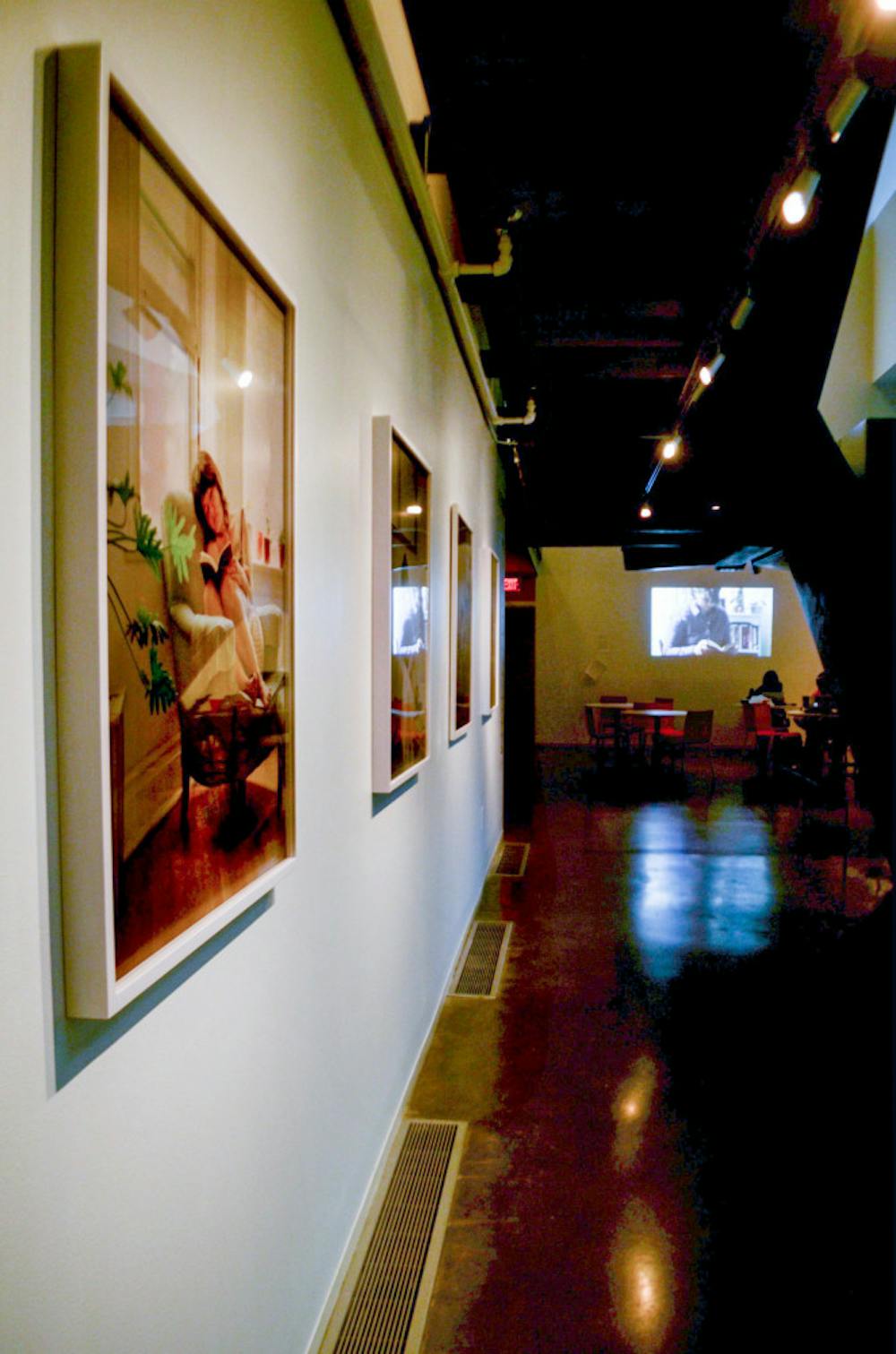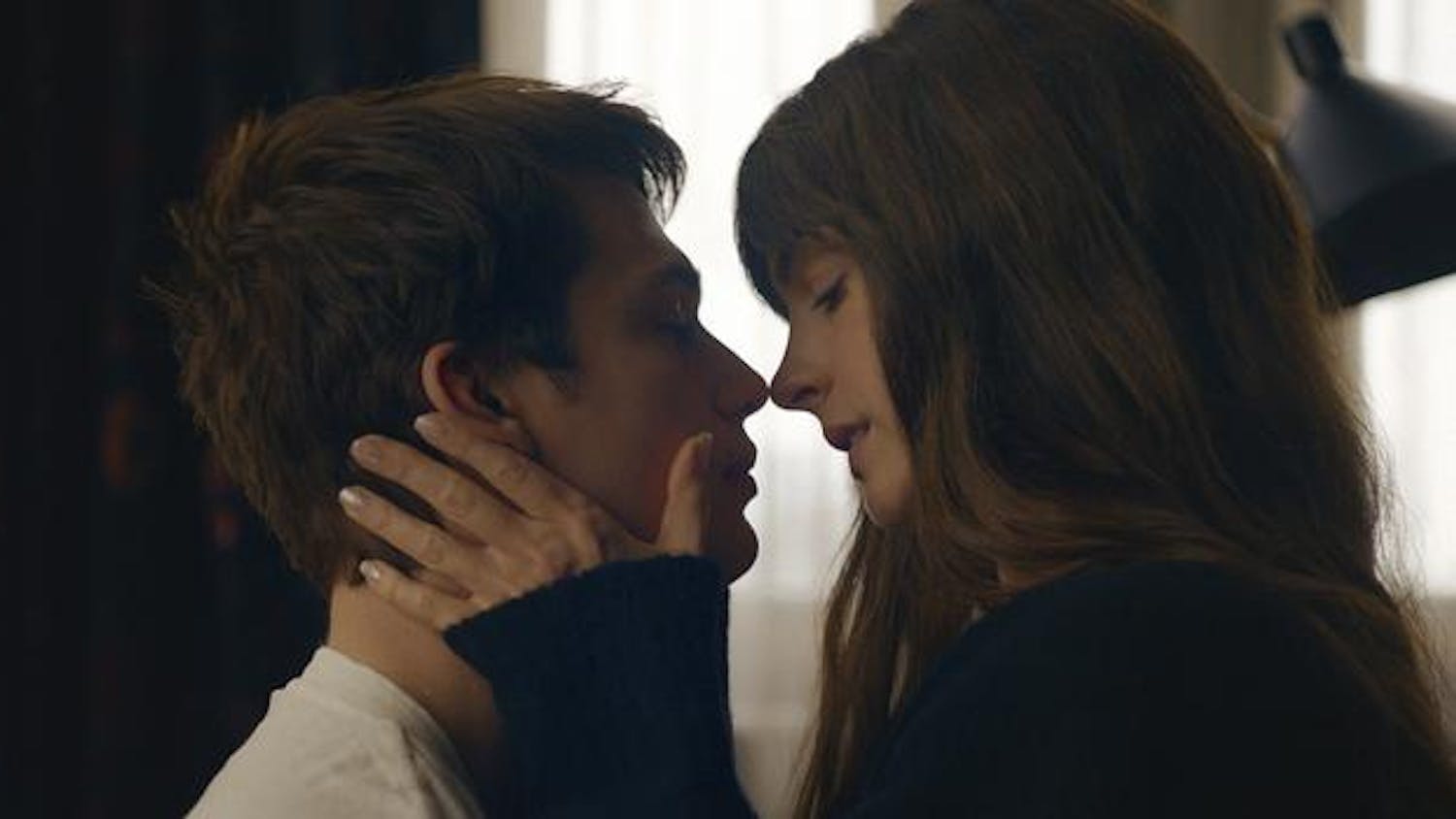Carrie Schneider’s art exhibition, “Reading Women,” has been on display in the Granoff Center for the Creative Arts since late October. Take a visit to the bottom floor of the building, and you’ll find yourself surrounded by large, framed photographs of women, sitting on couches, chairs and beds, reading books spanning every possible genre.
The exhibit “Reading Women” holds true to its name. At its most simple, it is a collection of 102 photos and video clips of women reading books by authors who are also women. But underlying the simplicity of the format is a multitude of complex ideas about beauty, influence, the exchange of knowledge and the power of womanhood.
“The influence of women artists and authors was really under-recognized in the canon of art history and literature,” said Schneider, who visited campus Monday to discuss the exhibit. Around the time she began work on “Reading Women,” the Brooklyn-based photographer had read a number of studies detailing the overwhelming maleness of prominent authors. In 2012, the year she started shooting the project, 4 percent of the artwork in New York’s Museum of Modern Art's Permanent Collection Galleries was produced by female artists. “I think (“Reading Women”) was just this really earnest way of responding to that,” Schneider said.
Initially Schneider did not foresee the direction her project would take. She began by asking a few of her female friends, mostly artists from Brooklyn, to sit for her while she filmed and photographed them reading literature of their choice. But as the project went on, she found it difficult to find a stopping point. By the time she finished filming in 2014, Schneider had recorded 102 “women reading women,” and the project had grown far beyond its original scope.
The feminist message in Schneider’s work is subtle but undoubtedly present. For example, each portrait was purposefully shot indoors, “underscoring something about interiority,” Schneider said. The artist added she wanted viewers to think “about how interior spaces are viewed as traditionally feminine, and kind of (allow) that to be powerful.” Likewise, the fact that each woman is at ease in her own space, reading something of her own choosing, is significant. “Posing is the enemy of beauty,” Schneider said. “I choose these moments where they’re very relaxed. … They’re totally relinquishing control, and they’re trusting me to represent them.”
Through her work, Schneider also hopes to bridge the division she believes has grown between modern-day feminism and its predecessors. She said that she wants to “reconcile some of those generational problems that I see by showing different generations kind of inspiring one another.”
“Reading Women” was installed in the bottom floor of the Granoff Center in late October, a location that has proven to be well-suited to the artwork. “The cafe tables and chairs that are often in the gallery space are frequently used by both members of the academic community, as well as the broader community for meetings and a lot of homework,” said Sophia LaCava-Bohanan, program coordinator at the Granoff Center. “To see the projection of reading women in that space — and the act of female artists reading prominent female writers — reflected as Brown University students (are) doing the same thing … (is) particularly interesting.”
“My hope is that students will encounter the work in such a way that allows them to reflect on their own participation and development of art history and the way in which females are represented through art,” LaCava-Bohanan added.
“Reading Women” will be on display in the Granoff Center through Dec. 5.
Correction: A previous version of this article stated that in 2012, 4 percent of the artwork in New York’s Museum of Modern Art was produced by female artists. In fact, 4 in 2012, percent of the artwork in New York’s Museum of Modern Art's Permanent Collection Galleries was produced by female artists. The Herald regrets the error.





